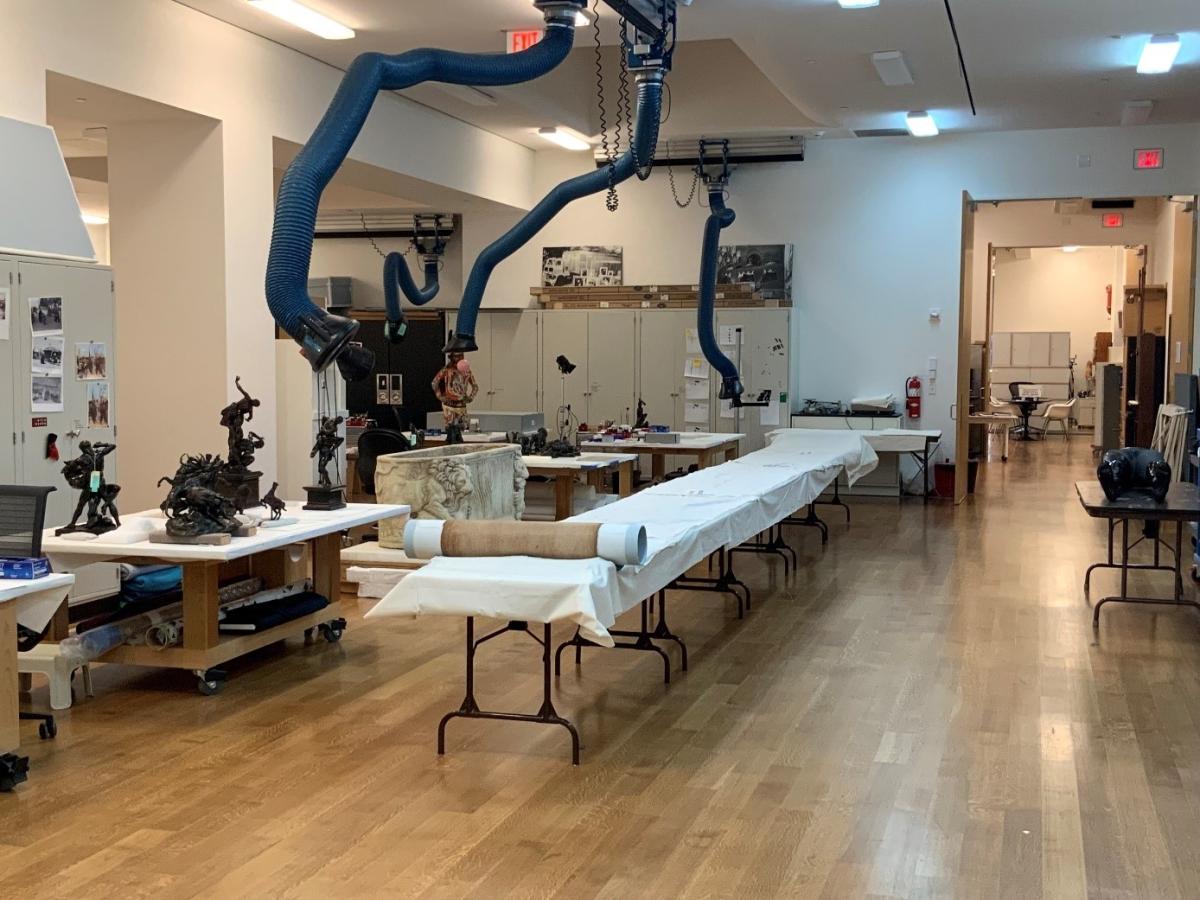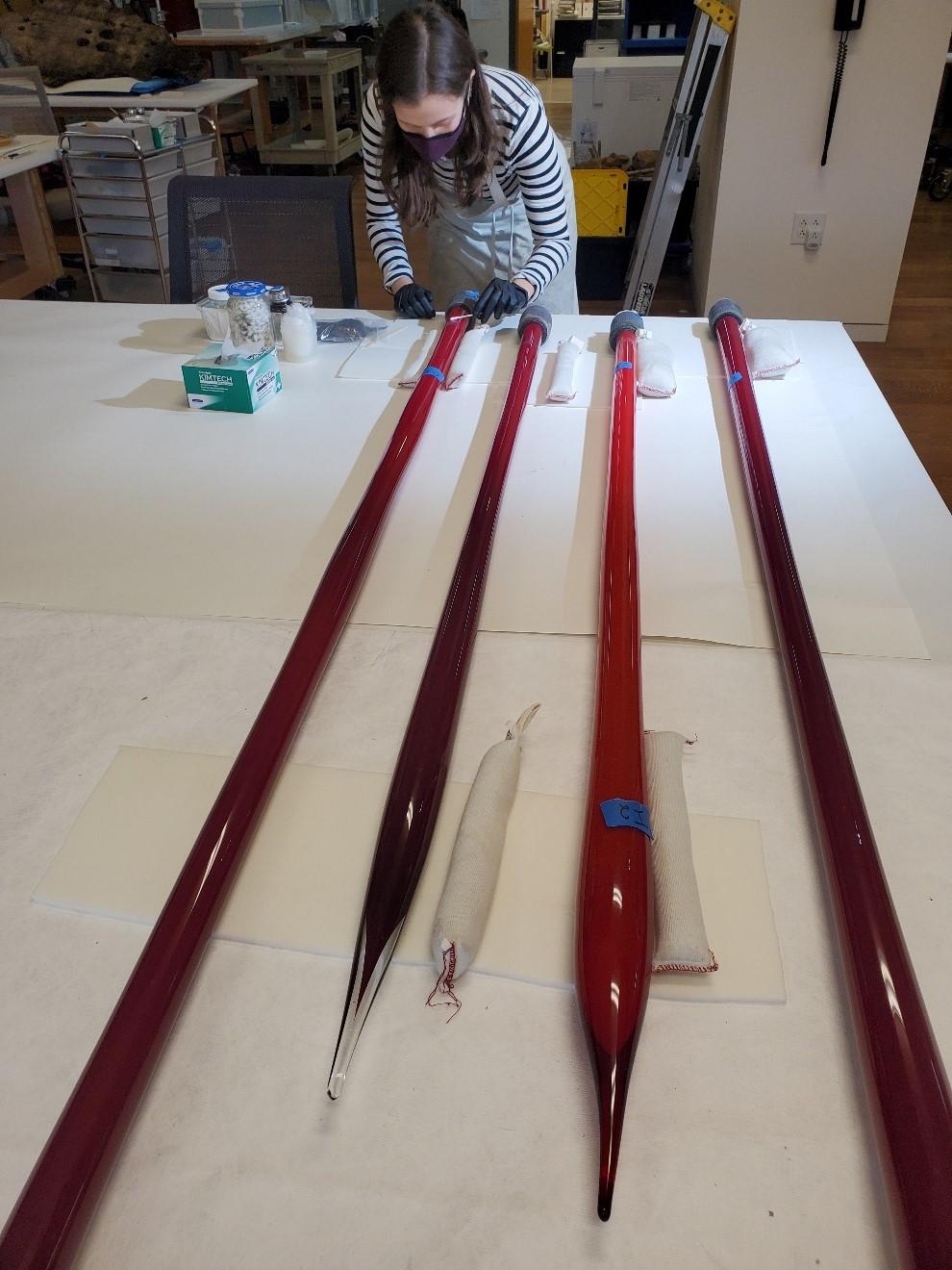Outreach and Equity at the Heart of the Virginia Museum of Fine Art’s Education and Training Grant
Through the Preservation and Access Education and Training Grant Program (E&T), NEH funds national, regional, and state-level training initiatives for cultural heritage professionals at every stage of their careers. This includes support for graduate conservation programs, preservation field services departments, and organizations planning workshops, fellowships, and internships designed to teach preservation topics to students and practitioners in a continuing education setting.
One of the Education and Training Program’s primary objectives is to ensure that a diverse generation of aspiring preservation professionals are prepared to start their careers with the skills needed to address today’s preservation challenges.
The Virginia Museum of Fine Arts (VMFA) applied to the Education and Training program with the same goal in mind: prepare a diverse community of students and early career professionals by expanding its internship and fellowship opportunities in its conservation studio and archives. It also sought to expand continuing education opportunities for museums across Virginia, including those with limited access to local, in-person workshops.
So how did the VMFA propose a museum training initiative that could achieve these goals? Staff in the conservation studio knew it wouldn’t just take a well-structured program, but also effective partnerships and a commitment to equitable and fair compensation to effectively reach and serve its audience. Acting Chief Conservator Debbie Linn and her colleagues at VMFA had all three in place when they applied to the Education and Training program in 2020, and now the museum is getting as much out of its training program as its trainees are.
Although organizations can seek E&T funding as their very first grant, the VMFA has received support from a wide range of funders. This includes support from private third parties, including David and Susan Goode and the Andrew W. Mellon Foundation, as well as state and federal funds from the Commonwealth of Virginia and the Institute of Museum and Library Services. The NEH’s Office of Challenge Programs also supported the museum in creating a new art research library.
It is in part due to the support of these many groups that the Virginia Museum of Fine Arts, located in Richmond, is the commonwealth’s flagship institution. The museum’s collections range from nineteenth century Russian Fabergé eggs to 2,000-year-old South Asian statues. As a museum with a world-class collection and lab of skilled conservators, staff had no shortage of exciting projects or expertise to offer their trainees. Even still, VMFA staff’s commitment to paid training opportunities and hard work building relationships with museums and schools across the state were just as important in developing an effective training program.
Equity
From the beginning, VMFA prioritized fair pay. “We always pay our pre-program interns,” says Debbie Linn, making these internships, which can be an important door into the conservation world, accessible to as many students as possible and elevating the profession.
Outreach and Partnerships
The museum also built close relationships with external stakeholders to ensure its intended audience knew about these programs. Museum personnel met regularly with staff at Virginia HBCUs, including career counselors and professors of art, chemistry, and history. Between 2017 and 2020, senior staff attended local job and career fairs, where they spoke with over 300 students about careers in conservation. Thanks to these outreach efforts, VMFA’s calls for internship applications draw a diverse and eminently qualified pool of applicants.
Just as VMFA worked with HBCUs and other institutions for its internship and fellowship programs, the Museum also partnered with the Virginia Association of Museums (VAM) to propose two workshops for its membership, each delivered twice across the state. Taught by a conservator and VMFA’s NEH-funded fellow, these workshops would focus on practical, hands-on collections care and be delivered both in Richmond as well as locations with less access to preservation training opportunities in the west and south of Virginia. By working with the VAM, the United States’ largest state-level museum association, VMFA knows it will broaden participation in its trainings.
A Well-designed Program
The museum’s first NEH-funded conservation fellow, Skyler Jenkins, started in September 2021 and has already taken on meaningful projects in the lab, including the treatment of a Dale Chihuly installation composed of nearly 200 red glass reeds mounted in a pond. Jenkins is removing the residue left by the pond water and ensuring the reeds are properly sealed to prevent the buildup of water pressure in them. She’s also started to explore opportunities for improving the laboratory’s microscopy capabilities, which should have a lasting impact on the Museum’s ability to perform cross-section analysis of objects.
How the Museum Benefits
VMFA staff sees its approach to its training programs as a boon for the conservation lab and museum at large, and not just because fellows like Jenkins provide important treatment to the Museum’s objects. Debbie Linn says, “they keep you on your toes,” “we get their energy,” “they make us better communicators about what we’re doing” both inside and outside the organization. Indeed, the interns and fellows help the conservation studio engage with other museum departments as well as the wider cultural heritage community. Because of their interns and fellows, staff take field trips to neighboring institutions, work with their trainees to devise and present research projects at conferences, and host meetings between interns and the staff of other Museum departments.
Hosting interns and fellows from different backgrounds also broadens the staff’s perspective, even shaping future initiatives. Linn explained that the museum hosts several family days each year, often exploring themes designed to make everyone feel invited and represented by the museum. These include an African American Art Family Day, a China Fest, and a Latin American Family Day. Linn recalled that a current intern, Nathan Hosmer, whose family is from Ecuador, suggested to the museum that the conservation interns present their work at the 2021 Latin American Family Day. Hosmer’s suggestion created a new opportunity for the public to see the work of the conservation studio.
In addition to making these kinds of experiences and opportunities possible, VMFA staff find other benefits to applying to the Education and Training program. Receiving NEH funds to conduct trainings and host internships can affirm a conservation lab’s value as a leader in the field and positively impact the reputation of the museum as a whole.
Looking Ahead
In the future, VMFA has a lot to look forward to with its Education and Training grant. The project’s director, Debbie Linn, reports that the lab is looking forward to hosting their first class of summer interns, Jenkins is exploring topics for her fellowship’s capstone research project, and everyone is excited about the museum’s upcoming plans to work with the Virginia Association of Museums to conduct preservation trainings across the state.
Want to Apply?
Thanks to the museum’s strong connections across departments, thoughtfully designed programs, and commitment to compensating interns and fellows fairly, VMFA was well-positioned to expand its training opportunities with an E&T grant in a way that helps promote a diverse workforce. If this story has given you any ideas for launching or growing a training program offered by your organization, let us know! We would love to help you develop your application.
Click here for more information about the Preservation and Access Education and Training Grant Program.
To get in touch, email us at preservation@neh.gov or give us a call at 202-606-8570.


